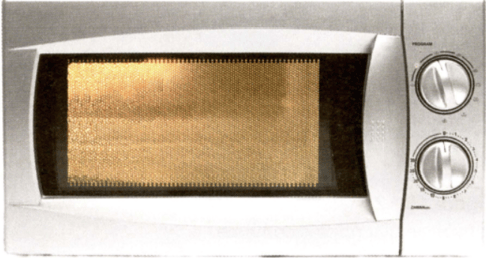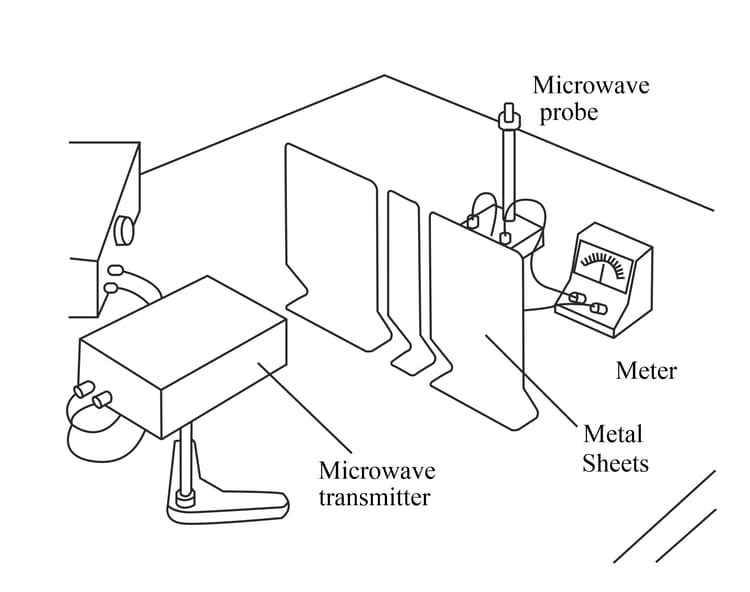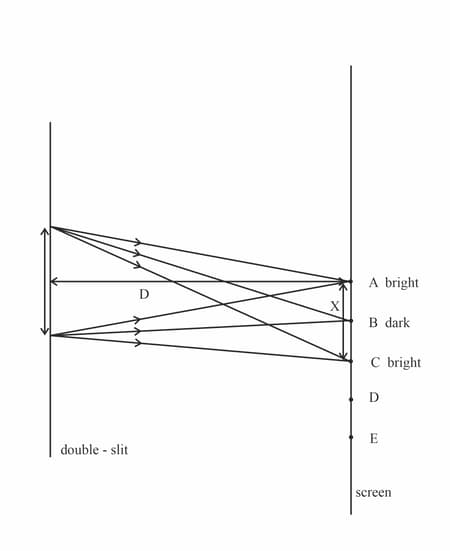A microwave oven (Figure) uses microwaves with a wavelength of . The front door of the oven is made of glass with a metal grid inside; the gaps in the grid are a few millimetres across. Explain how this design allows us to see the food inside the oven, while the microwaves are not allowed to escape into the kitchen (where they might harm us).

A microwave oven has a metal grid in the door to keep microwaves in and let light out


Important Questions on Superposition of Waves
Look at the experimental arrangement shown in Figure. Suppose that the microwave pro be is placed at a point of low intensity in the interference pattern.
Suggest what will happen if one of the gaps in the barrier is now blocked.

Draw sketches of displacement against time to illustrate the following:
(a) Two waves having the same amplitude and in phase with one another
Draw sketches of displacement against time to illustrate the following:
(b) Two waves having the same amplitude and with a phase difference of .
Draw sketches of displacement against time to illustrate the following:
(c) Two waves initially in phase but with slightly different wavelengths.
Consider points and on the screen in Figure, where . State and explain what you would expect to observe at and .

The type of interference, and hence whether a bright or a dark fringe is seen on the screen, depends on the path difference between the rays of light arriving at the screen from the double-slit.
In a double-slit experiment using light from a helium– neon laser, a student obtained the following results:
Width of Fringes Separation of slits Slit-to-screen distance Determine the wavelength of the light. And
If The student moved the screen to a distance of From the slits. Determine the fringe separation Now.
Use the equation to explain the following observations:
(a) With the slits closer together, the fringes are further apart.
